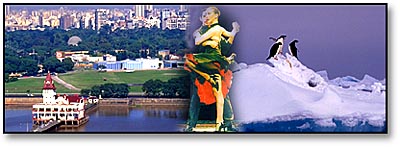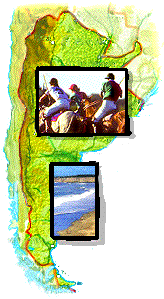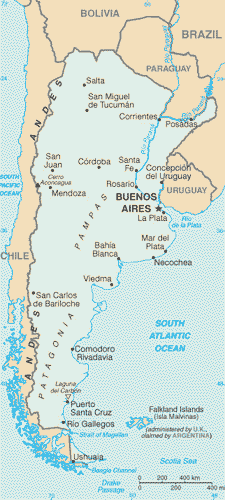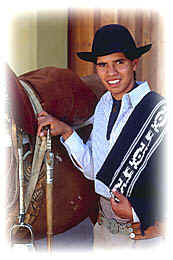
Argentina Home
History
Explorations
Calendar of Events
Travel Tips
Buenos Aires
Cordoba
Mar del Plata
Latin America
The World
| Argentina possesses some of the world's tallest mountains, expansive deserts, and most impressive waterfalls... |
An Introduction
 Comprising
almost the entire southern half of South America, Argentina is the world's
eighth largest country, covering an area of 2.8 million square km.
Argentina possesses some of the world's tallest mountains, expansive
deserts, and impressive waterfalls, with the diversity of the land ranging
from wild, remote areas in southern Patagonia to the bustling metropolis
of Buenos Aires in the north.
Comprising
almost the entire southern half of South America, Argentina is the world's
eighth largest country, covering an area of 2.8 million square km.
Argentina possesses some of the world's tallest mountains, expansive
deserts, and impressive waterfalls, with the diversity of the land ranging
from wild, remote areas in southern Patagonia to the bustling metropolis
of Buenos Aires in the north.
Its six major regions are as follows:
 Cuyo & the
Andean Northwest
Cuyo & the
Andean Northwest
This area surrounding the Andes began as a colony of Peru, but today
only a few miners and herders occupy this unforgiving region of volcanic
peaks and salt lakes. Very little rain falls in Cuyo, though to the east
are found the fertile river valleys and subtropical lowlands of the Gran
Chaco.
Mesopotamia & the Northeast
Mesopotamia, a broad, flat plain between the Parana and Uraguay Rivers
in northern Argentina, is wet, swampy and extremely hot during the summer.
The northern province of Misiones, a more mountainous region nearly
enclosed by Brazil and Paraguay, is densely forested and contains a
section of the majestic Iguazu Falls.
The Chaco
This parched area in the west is part of the enormous Gran Chaco, a
region that Argentina shares with Bolivia, Paraguay, and Br azil.
The Chaco contains both grassland and thorny forest.
azil.
The Chaco contains both grassland and thorny forest.
The Pampas
These fertile plains are Argentina's bread- basket. They consist of the
Humid Pampas along the seaboard and the Dry Pampas in the west and south.
The region includes Buenos Aires, as well as the world- class beaches of
its surrounding area.
Patagonia and the Lake District
South of the Rio Colorado, experiences a desert climate, although
temperatures range from mild to subzero and terrain varies from bucolic
river valleys to the gigantic, ice-capped southern Andes. Its cool grazing
grounds support enormous flocks of sheep, and numerous fruit and vegetable
farms can be found in the valleys. Patagonia also holds vast reserves of
oil and coal.
 Tierra
del Fuego
Tierra
del Fuego
The Land of Fire is actually an archipelago
including the Isla Grande de Tierra del Fuego (which Argentina shares with
neighbouring Chile) and
numerous smaller islands. Northern Isla Grande is similar in terrain to
Patagonia's plains, while the mountainous area in the south is filled with
forests and glaciers. Its climate is usually mild year-round, although
storms are frequent.
Copyright (c) 1998-2012 interKnowledge Corp. All rights reserved.
